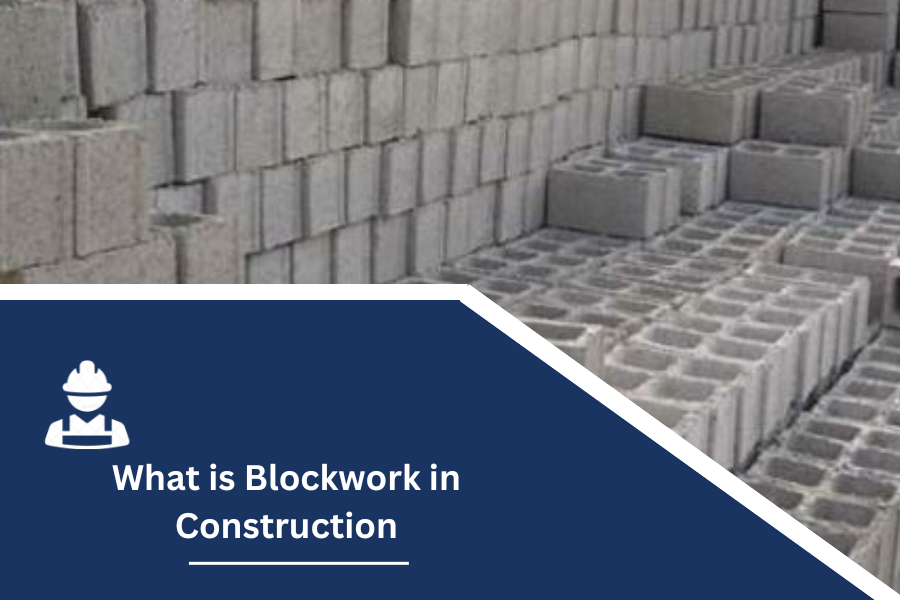What is Blockwork in Construction?
Table of Contents
Introduction
In the vast realm of construction, blockwork stands as a cornerstone, quite literally, of many structures. As we delve into the world of blockwork, it’s essential to understand its definition and the pivotal role it plays in construction projects.
Types of Blockwork
Concrete Blockwork
Concrete blockwork, composed of aggregate, cement, and water, boasts impressive structural integrity. Its versatility makes it a preferred choice for various applications, ranging from residential to industrial construction. The advantages lie not only in its strength but also in its fire-resistant properties, making it ideal for safety-conscious projects.
Hollow Blockwork
Hollow blockwork, characterized by voids within the blocks, finds application in load-bearing walls. The structure’s hollow nature contributes to its lightweight properties, making it easier to handle during construction. This type of blockwork is commonly used in partition walls, reducing overall building weight without compromising strength.
AAC Blockwork
Autoclaved Aerated Concrete (AAC) blockwork introduces a novel approach to construction materials. With a composition of sand, cement, lime, and aluminum powder, AAC blocks offer excellent thermal insulation. The lightweight nature of AAC blockwork makes it an eco-friendly option, contributing to energy-efficient buildings.
Advantages of Blockwork
Structural Strength
Blockwork, in its various forms, provides robust structural strength to buildings. The interlocking nature of blocks creates a solid foundation, ensuring longevity and stability.
Thermal Insulation
An often-overlooked benefit of blockwork is its inherent thermal insulation properties. The composition of certain block types, such as AAC, effectively regulates temperature, enhancing energy efficiency in buildings.
Cost Efficiency
Blockwork’s cost efficiency stems from its ease of manufacturing, installation, and durability. The reduced construction time and long-lasting results make it an economical choice for builders and developers.
Common Applications
Residential, commercial, and even infrastructure projects leverage blockwork. Its adaptability makes it suitable for constructing walls, partitions, and retaining structures.
Construction Process
The construction process involves meticulous steps, from preparing the foundation to laying blocks and applying mortar. Each phase contributes to the overall stability and quality of the structure.
Challenges and Solutions
Despite its many advantages, blockwork faces challenges, such as moisture concerns and potential structural issues. Innovations in materials and construction techniques offer solutions to address these challenges effectively.
Innovations in Blockwork
Sustainable materials and modern construction techniques mark the evolution of blockwork. As the construction industry embraces green practices, blockwork evolves to meet environmental standards.
Comparisons with Other Construction Methods
Comparisons with traditional methods, such as brick construction and timber framing, highlight the unique advantages that blockwork brings to the table.
Future Trends in Blockwork
The future of blockwork is shaped by smart technologies and a commitment to sustainable practices. Integrating these elements into construction projects paves the way for more efficient and environmentally friendly structures.
Case Studies
Examining successful blockwork projects provides insights into best practices and lessons learned, contributing to the ongoing improvement of construction methods.
Conclusion
In conclusion, blockwork’s significance in construction cannot be overstated. From its diverse types and advantages to its applications and innovations, blockwork continues to shape the landscape of modern building practices. Embracing the evolving trends and learning from case studies ensures that blockwork remains a vital component of the construction industry.
FAQS
- How is blockwork different from traditional construction methods?
- Unlike traditional methods like brick construction or timber framing, blockwork involves the use of pre-manufactured blocks that are assembled on-site. This method often results in quicker construction times, cost savings, and the ability to achieve specific structural requirements.
- Are there different types of blockwork, and how do they differ?
- Yes, there are various types of blockwork, including concrete blockwork, hollow blockwork, and AAC blockwork. Each type has unique compositions and properties, catering to specific construction needs. For example, AAC blockwork is known for its lightweight and energy-efficient qualities.
- What innovations are shaping the future of blockwork in construction?
- The future of blockwork is influenced by innovations such as smart block technologies and a focus on sustainable materials. These advancements aim to enhance the efficiency, environmental friendliness, and overall performance of blockwork in the evolving construction industry.




